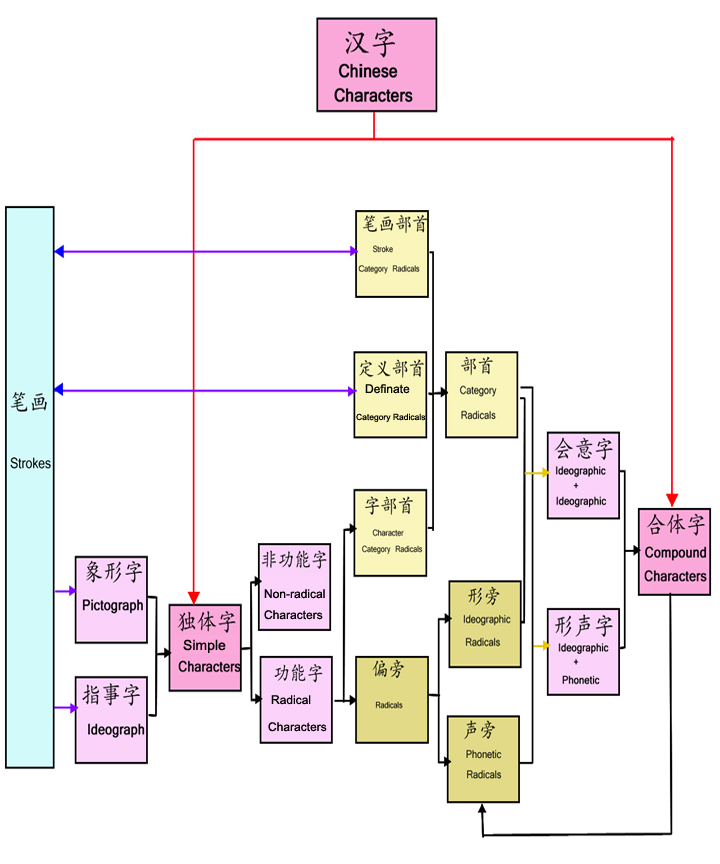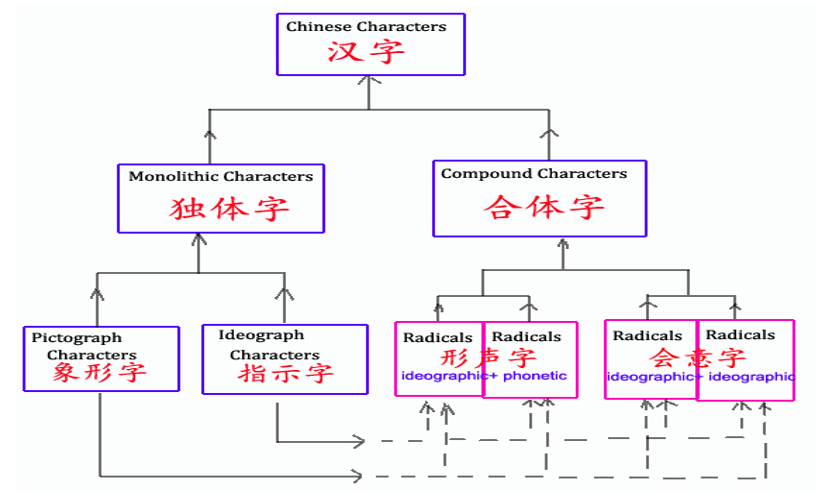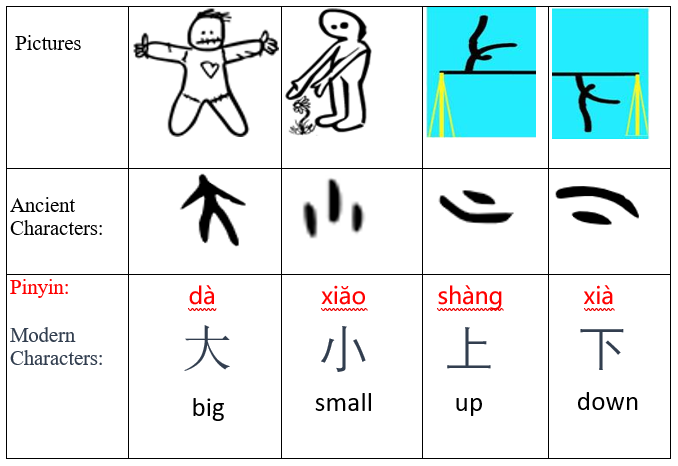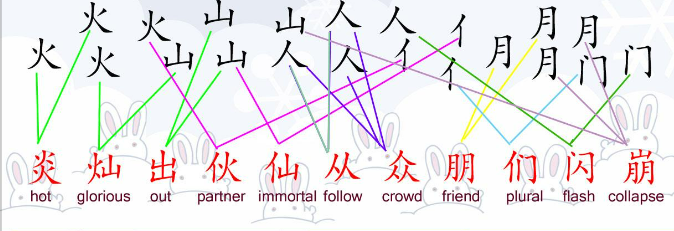General Concepts of Chinese Characters
1. Four character-making ways.
Chinese characters were made in logical ways. The original oracle characters were invented at least 3300 years ago. The original characters were symbols. They came from pictures, but simplified into drawings which were called pictograph or ideograph characters. Pictograph(象形) means picture graphic. Ideograph(指事) means idea graphic. In these two ways many monolithic characters were invented.
Then monolithic characters were combined each other to form a lot of compound characters. A monolithic character is named radical if it is part of a compound character. A radical is a part of a compound character formed by a group of strokes(Stroke category radicals笔画部首 or definition category radicals定义部首) or a monolithic character which has a fix meaning to be used to form a compound character. Radicals can be phonetic or ideographic. There are two ways to form compound character: ideographic+ phonetic (形声) and ideographic+ ideographic (会意). With the knowledge of the above four character-making ways, we can learn characters logically and remember them easily. The six categories of Chinese characters(六书)indicates the four character-making ways and another two (转注,假借)character-using ways.
2. Some examples of Pictograph(象形)Characters:
image 1
By looking at this picture, you can see the moon, a flying bird in the sky, a mountain, a fire, and a person walking outside the door. You now have 6 English words to express what you have seen. So how are these present Chinese characters translated? Here’s how:
This kind of characters originally came from pictures, but simplified as symbols with strokes. They were easily to be understood and remember.
3.Some examples of Ideograph(指示)Characters:
This kind of characters originally came from strokes or pictographs in a self-explanatory way. So they are called self-explanatory characters too.
4. Monolithic characters can be radicals to combine each other to form compound characters.
Compound characters composed with same radicals: (Ideographic + Ideographic)
Compound characters composed with different radicals: (Ideographic + Ideographic)
Some characters composed of monolithic characters in image 1:
image-2
Some monolithic characters are changed in shape when they are used as radicals. Such as 人 --> 亻.
Here 炎、出、从、众、朋、闪 are composed of ideographic + ideographic form.
灿、伙、仙、们、崩 are composed of ideographic + phonetic form.
Some monolithic characters are changed in shape when they are used as radicals. Such as 人 --> 亻.
Here 炎、出、从、众、朋、闪 are composed of ideographic + ideographic form.
灿、伙、仙、们、崩 are composed of ideographic + phonetic form.









